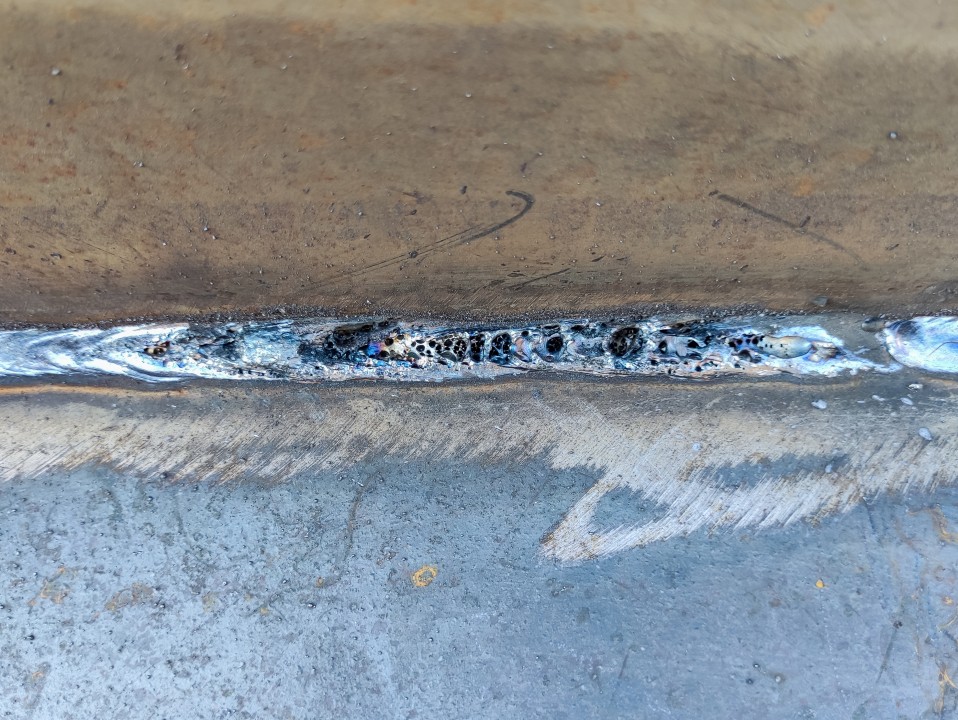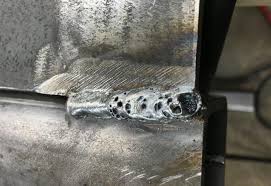Porosity in Welding: Identifying Common Issues and Implementing Ideal Practices for Prevention
Porosity in welding is a prevalent issue that commonly goes undetected up until it causes significant problems with the integrity of welds. This common issue can jeopardize the stamina and durability of welded frameworks, posing safety risks and resulting in costly rework. By recognizing the source of porosity and executing effective avoidance approaches, welders can dramatically enhance the top quality and integrity of their welds. In this discussion, we will certainly explore the essential variables adding to porosity formation, examine its detrimental impacts on weld performance, and discuss the ideal practices that can be adopted to decrease porosity occurrence in welding procedures.
Usual Sources Of Porosity

Utilizing unclean or damp filler products can introduce impurities into the weld, adding to porosity problems. To alleviate these common causes of porosity, thorough cleaning of base metals, correct protecting gas selection, and adherence to ideal welding parameters are vital methods in achieving top notch, porosity-free welds.
Effect of Porosity on Weld Quality

The visibility of porosity in welding can significantly compromise the structural integrity and mechanical residential properties of welded joints. Porosity produces gaps within the weld metal, compromising its overall strength and load-bearing capability.
Welds with high porosity levels tend to exhibit reduced effect stamina and lowered capability to flaw plastically prior to fracturing. Porosity can impede the weld's capability to efficiently send pressures, leading to premature weld failure and prospective safety and security threats in vital structures.
Finest Practices for Porosity Prevention
To boost the structural honesty and high quality of welded joints, what particular actions can be applied to decrease the event of porosity throughout the welding procedure? Porosity avoidance in welding is important to make certain the stability and toughness of the last weld. One effective technique is proper cleaning of the base steel, removing any pollutants such as rust, oil, paint, or dampness that can lead to gas entrapment. Making sure that the welding tools is in great problem, with clean consumables and suitable gas flow prices, can also considerably lower porosity. Furthermore, preserving a secure arc and controlling the welding criteria, such as voltage, their website current, and take a trip rate, aids develop a regular weld pool that lessens the risk of gas entrapment. Making use of the appropriate welding technique for the details product being bonded, such as readjusting the welding angle and weapon position, can better stop porosity. Normal evaluation of welds and immediate remediation of any problems determined throughout the welding process are crucial techniques to avoid porosity and produce high-grade welds.
Significance of Proper Welding Techniques
Implementing proper welding strategies is critical in ensuring the architectural stability and quality of welded joints, building upon the foundation of efficient porosity avoidance procedures. Extreme warmth can lead to raised porosity due to the entrapment of gases in the weld pool. Additionally, utilizing the proper welding specifications, such as voltage, current, and travel speed, is essential for attaining article audio welds with very little porosity.
Additionally, the choice of welding procedure, whether it be MIG, TIG, or stick welding, need to straighten with the particular requirements of the job to guarantee ideal outcomes. Proper cleaning and prep work of the base steel, in addition to choosing the ideal filler product, are likewise important elements of skillful welding methods. By adhering to these ideal techniques, welders can decrease the risk of porosity formation and generate premium, structurally sound welds.

Evaluating and High Quality Control Procedures
Examining procedures are crucial to identify and protect against porosity in welding, ensuring the imp source stamina and durability of the last product. Non-destructive testing methods such as ultrasonic testing, radiographic screening, and visual inspection are typically used to determine prospective issues like porosity.
Post-weld evaluations, on the other hand, analyze the last weld for any type of flaws, including porosity, and confirm that it fulfills defined standards. Implementing a detailed top quality control plan that consists of thorough screening procedures and evaluations is critical to lowering porosity problems and making certain the general high quality of welded joints.
Conclusion
To conclude, porosity in welding can be an usual problem that affects the high quality of welds. By identifying the usual root causes of porosity and executing best methods for prevention, such as correct welding strategies and screening measures, welders can make certain premium quality and reliable welds. It is necessary to focus on prevention techniques to decrease the occurrence of porosity and maintain the integrity of bonded structures.